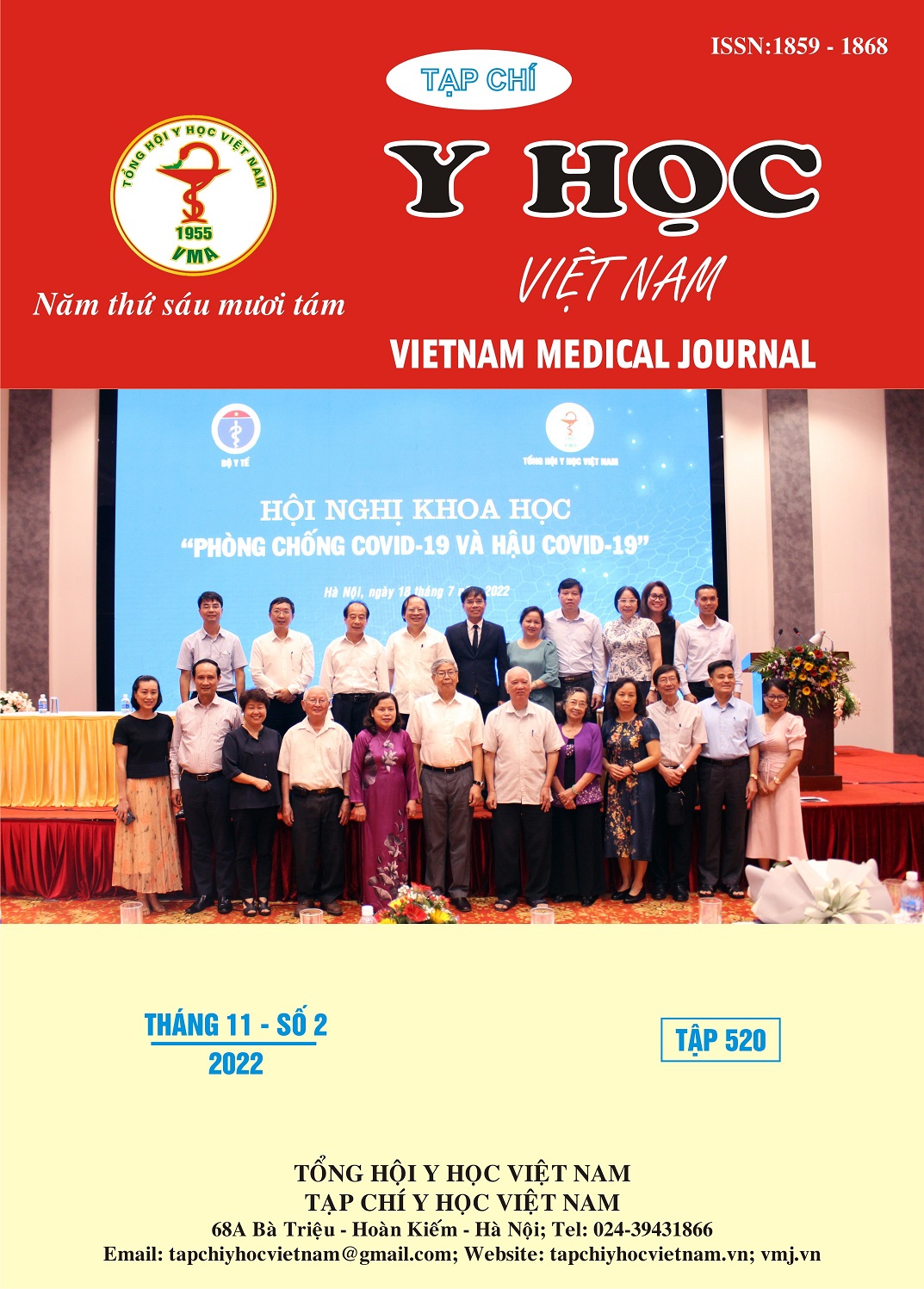ĐẶC ĐIỂM LÂM SÀNG, CẬN LÂM SÀNG RĂNG KHÔN HÀM DƯỚI MỌC LỆCH THEO PARANT II
Nội dung chính của bài viết
Tóm tắt
Mục tiêu: Mô tả hình thái lâm sàng, Xquang răng khôn hàm dưới mọc lệch ngầm phân loại theo Parant II tại khoa Răng Hàm Mặt Bệnh viện Bạch Mai năm 2021-2022. Phương pháp nghiên cứu: 80 bệnh nhân có răng khôn hàm dưới được phân loại theo Parant II đến khám tại Khoa Răng Hàm Mặt Bệnh viện Bạch Mai Hà Nội từ ngày 7/2021 – 5/2022 được hỏi bệnh và thăm khám lâm sàng và chụp xquang Panorama. Các biến số nghiên cứu gồm tuổi-giới; tư thế răng khôn hàm dưới (RKHD); vị trí độ sâu của RKHD so với răng hàm lớn thứ 2; tương quan RKHD với khoảng rộng xương hàm. Kết quả nghiên cứu: Độ tuổi của bệnh nhân chiếm tỷ lệ cao nhất trong nhóm bệnh nhân phẫu thuật nhổ răng khôn hàm dưới theo Parant II là nhóm bệnh nhân từ 18-24 tuổi (50%) và không có sự khác biệt về giới tính. Tỷ lệ răng khôn hàm dưới mọc lệch gần chiếm tỷ lệ cao nhất lên tới 70%. 56,3% các răng khôn hàm dưới theo phân loại Parant II có điểm cao nhất ngang mức hoặc cao hơn so với mặt nhai răng hàm lớn thứ 2 bên cạnh. Có tới 89,3% răng khôn hàm dưới trong nhóm nghiên cứu có chân răng sát ống thần kinh răng dưới. Hầu hết các răng (76,3%) chưa có biến chứng khi được thăm khám. Kết luận: Độ tuổi của bệnh nhân chiếm tỷ lệ cao nhất phẫu thuật nhổ răng khôn hàm dưới theo Parant II là nhóm bệnh nhân từ 18-24 tuổi, không khác biệt giới. Răng khôn hàm dưới theo phân loại Parant II chủ yếu lệch gần, có điểm cao nhất ngang mức hoặc cao hơn so với mặt nhai răng hàm lớn thứ 2 bên cạnh, chân răng sát ống thần kinh răng dưới và chưa có biến chứng.
Chi tiết bài viết
Từ khóa
Răng khôn hàm dưới, Parant II.
Tài liệu tham khảo
2. Lê Bá Anh Đức (2014), Đánh giá hiệu quả của ghép huyết tương giàu yếu tố tăng trưởng sau phẫu thuật nhổ răng khôn hàm dưới khó, Luận văn tốt nghiệp bác sỹ nội trú, Đại học Y Hà Nội
3. Lê Ngọc Thanh (2005), Nhận xét đặc điểm lâm sàng, X quang và đánh giá kết quả phẫu thuật răng khôn hàm dưới mọc lệch, mọc ngầm, Luận văn tốt nghiệp thạc sỹ, Đại học Y Hà Nội.
4. Nguyễn Thị Luyến (2015), Đánh giá kết quả phẫu thuật nhổ răng khôn hàm dưới theo Parant II không đóng kín huyệt ổ răng, Luận văn tốt nghiệp thạc sĩ Y học, Đại học Y Hà Nội.


